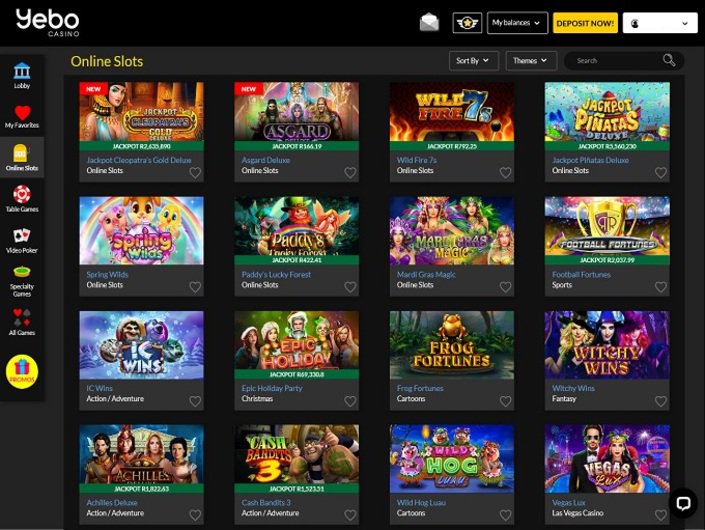Beyond the Bonus Experience Limitless Casino Entertainment with ninecasino and Claim Your Welcome Of
- Beyond the Bonus: Experience Limitless Casino Entertainment with ninecasino and Claim Your Welcome Offer.
- A Diverse Portfolio of Gaming Options
- Understanding Bonuses and Promotions
- Maximizing Your Bonus Potential
- Ensuring Security and Fair Play
- Understanding Licensing and Regulation
- Navigating the Payment Options and Support Channels
Beyond the Bonus: Experience Limitless Casino Entertainment with ninecasino and Claim Your Welcome Offer.
Embarking on the world of online casinos can be an exhilarating experience, filled with opportunities for entertainment and potential rewards. With a multitude of platforms vying for attention, choosing the right one is paramount. ninecasino emerges as a compelling option, offering a diverse range of games, a user-friendly interface, and a commitment to player satisfaction. This comprehensive guide delves into the core features of ninecasino, exploring its game selection, bonus structure, security measures, and overall user experience. Whether you’re a seasoned gambler or a newcomer to the world of online casinos, this article provides valuable insights to help you make informed decisions.
The allure of online casinos lies in their convenience and accessibility. Instead of being confined to brick-and-mortar establishments, players can enjoy their favorite games from the comfort of their homes, 24/7. However, this convenience comes with the responsibility of selecting a trustworthy and reputable platform. ninecasino prioritizes safety and fairness, utilizing advanced encryption technology to protect player data and ensuring the integrity of its games. Furthermore, the platform’s intuitive design and responsive customer support contribute to a seamless and enjoyable gaming experience.
A Diverse Portfolio of Gaming Options
The heart of any online casino is its game selection. ninecasino boasts an extensive library of titles, catering to a wide range of preferences. From classic table games like blackjack, roulette, and baccarat to an impressive array of slot machines, players are spoiled for choice. The platform partners with leading game developers to ensure high-quality graphics, engaging gameplay, and fair payouts. Live dealer games add a touch of realism, allowing players to interact with professional dealers in real-time, recreating the atmosphere of a traditional casino.
Slot games represent a significant portion of ninecasino’s offerings, with themes ranging from ancient mythology to pop culture phenomena. Players can explore various paylines, bonus features, and progressive jackpots, enhancing the excitement and potential for winning. Table game enthusiasts will appreciate the diverse selection of variations available, allowing them to tailor their gaming experience to their individual preferences. Choosing the right game is crucial and often depends on personal preference and risk tolerance.
| Slots | 500+ | Diverse Themes, Progressive Jackpots, Bonus Rounds |
| Table Games | 100+ | Blackjack, Roulette, Baccarat, Poker Variations |
| Live Dealer | 50+ | Real-time Interaction, Professional Dealers, Immersive Experience |
| Video Poker | 20+ | Classic Poker Styles, High Payout Potential |
Understanding Bonuses and Promotions
Bonuses and promotions are integral to the online casino experience, attracting new players and rewarding loyal customers. ninecasino offers a variety of incentives, including welcome bonuses, deposit matches, free spins, and loyalty programs. These offers can significantly enhance playing time and increase the chances of winning. However, it’s essential to carefully review the terms and conditions associated with each bonus, paying attention to wagering requirements, game restrictions, and maximum withdrawal limits.
Wagering requirements specify the amount of money a player must wager before being able to withdraw bonus funds. Game restrictions may limit the use of bonus funds to specific titles. Maximum withdrawal limits cap the amount of winnings that can be withdrawn from a bonus. Understanding these terms and conditions ensures a transparent and enjoyable bonus experience. Responsible gaming practices also involve setting limits and managing bankroll effectively.
Maximizing Your Bonus Potential
To effectively maximize bonus potential, players should carefully strategize their gaming approach. Choosing games with low house edges and favorable wagering contributions can help meet wagering requirements more efficiently. For example, slots often contribute 100% to wagering requirements, while table games may contribute a smaller percentage. By selecting games strategically and managing bankroll wisely, players can significantly enhance their chances of converting bonus funds into real winnings. Furthermore, taking advantage of loyalty programs can unlock additional rewards and benefits over time. To illustrate, here is a list of bonus types commonly available:
- Welcome Bonus: Offered to new players upon registration.
- Deposit Match: Matches a percentage of the player’s deposit.
- Free Spins: Allow players to spin the reels of a slot game without wagering real money.
- Loyalty Program: Rewards frequent players with exclusive benefits.
- Cashback: Returns a percentage of losses.
Ensuring Security and Fair Play
In the realm of online casinos, security and fair play are paramount concerns. ninecasino prioritizes these elements, employing robust security measures to protect player data and ensure the integrity of its games. The platform utilizes industry-standard encryption technology to safeguard financial transactions and personal information. Additionally, ninecasino undergoes regular audits by independent testing agencies to verify the fairness of its games and the randomness of its results. These audits serve as a testament to the platform’s commitment to transparency and accountability.
Moreover, ninecasino promotes responsible gaming practices, providing players with tools to manage their gaming behavior. These tools include deposit limits, loss limits, and self-exclusion options. By empowering players to control their spending and time spent online, ninecasino fosters a safe and sustainable gaming environment.It is crucial for players to utilize these resources proactively to maintain a healthy relationship with online gaming.
Understanding Licensing and Regulation
The legality of online casinos varies significantly across jurisdictions. ninecasino operates under a valid gambling license issued by a reputable regulatory authority, ensuring compliance with stringent industry standards. This license signifies that the platform has met rigorous criteria related to security, fairness, and financial stability. Players should always verify the licensing information of an online casino before depositing funds or engaging in gameplay. A reliable license provides assurance that the platform is subject to oversight and accountability, protecting player interests. Here are some important features to consider:
- Encryption Technology: Protects financial transactions.
- Independent Audits: Verify game fairness.
- Responsible Gaming Tools: Promote safe gambling practices.
- Valid Gambling License: Ensures regulatory compliance.
- Secure Payment Methods: Protects banking information.
Navigating the Payment Options and Support Channels
Convenient payment options are essential for a seamless online casino experience. ninecasino supports a variety of secure payment methods, including credit cards, e-wallets, and bank transfers. Players can choose the option that best suits their preferences and financial needs. Withdrawal requests are typically processed promptly, ensuring quick access to winnings. However, processing times may vary depending on the chosen payment method and the player’s verification status.
Responsive customer support is equally important. ninecasino offers multiple support channels, including live chat, email, and a comprehensive FAQ section. Knowledgeable support representatives are available around the clock to assist players with any questions or concerns. The FAQ section provides answers to common queries, covering topics such as account management, bonuses, payment methods, and technical issues. Efficient customer support builds trust and enhances player satisfaction.
| Credit Card | Instant | 3-5 Business Days |
| E-Wallet (e.g., Skrill, Neteller) | Instant | 24-48 Hours |
| Bank Transfer | 1-3 Business Days | 3-7 Business Days |
Ultimately, the world of online casinos offers a captivating blend of entertainment and opportunity. ninecasino distinguishes itself through its diverse game selection, enticing bonuses, robust security measures, and commitment to player satisfaction. By understanding the key features and responsible gaming practices, players can embark on a rewarding and enjoyable online casino experience.



